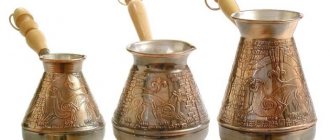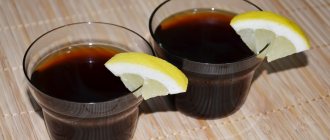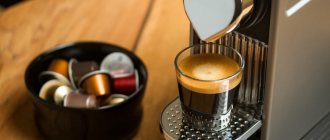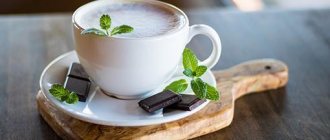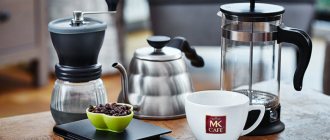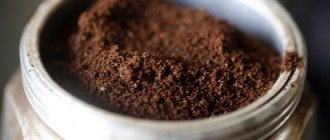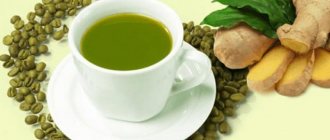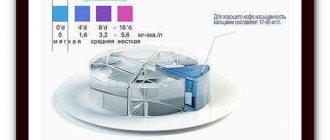The French press can be used not only for brewing tea, but also for preparing delicious aromatic coffee. This device is, in fact, a glass flask with a lid, which is equipped with a piston with a plunger (filter). The plunger moves up and down, causing the coffee grounds to be pressed tightly to the bottom of the vessel. Thus, the drink itself is safely separated from the thick mass, and they do not mix. If ground coffee is brewed correctly and infused well in a French press, the ground beans will reveal their flavor properties and qualities to the fullest. The result is a particularly rich drink.
History of the teapot
The technology can hardly be called new: the first French presses appeared back in the 1800s (and yes, in France), although they were far from modern models. At the beginning of the 20th century, the design was noticeably improved in Italy, and by the mid-50s, the French press acquired its modern look, and this was done, again, by the French.
In the post-Soviet space, French presses gained mass popularity already in the 2000s, when they began to be found in literally every tea and coffee store, as well as in kitchenware departments. But at first they were used exclusively for making tea, and coffee was prepared in other ways. And, perhaps, only in the last decade have French presses been used for coffee
Classic French Press
French press for making coffee
The brewer, which first gained popularity in the European market, was produced and distributed by the French company Martin SA under the name Chambord. Now it is a classic. Many will recognize the design features of Chambord: a glass vessel, a steel lid, a round handle of the rod, which has been preserved throughout time. Martin SA produced it until 1991, when the company was purchased by the Danish holding Bodum. Since 1991, the latter has supported the Chambord design in its range of home products, making it one of the most recognizable devices for home coffee preparation.
During the era of Chambord's popularity, there was another French press design that appeared back in the 1960s.
Martin SA investor Louis James de Viel Castel created a British company called Household Articles Ltd., which produced a coffee maker called La Cafetière.
In 1991, when Bodum acquired Martin SA, Louis James de Ville Castel lost the right to distribute its products in France under any names.
Design features of French presses
All teapots are of the same design and consist of five main elements:
- The flask is where the brewing takes place. The most commonly used glass flask is made of heat-resistant borosilicate glass. This is exactly what is used, only thinner, for glass baking dishes. Even a sharp change in temperature or strong sudden heating does not lead to the appearance of cracks. But the flask is not shockproof - if you drop it, or hit the coffee pot too hard, the flask will break. There are also metal flasks, which are much stronger and last, in general, forever, but you need to specifically look for this; there are few offers in stores. There is also ceramics - it is believed that the drink tastes better in it, but again, it is very rare.

- The filter is usually three-layer. At the bottom is a frame, then a metal or nylon fine mesh, and then a metal plate with holes, and usually a twisted catcher along the edge.

- A plunger, also known as a piston, connects the lid and the filter.
- Lid. Just a lid, flat or convex, made of different materials. Most often it is stainless steel, but there is also plastic and glass.

- Body and handle. Usually there is either a bottom or legs that protect the surface from touching the hot flask, and the decor both holds the flask and somewhat protects it from impacts.

Most often on the market you will find glass flasks in a stainless steel body, with a metal handle and lid. As a cheaper option - with plastic components.
Operating principle

Preparatory stage:
To brew coffee in a French press, it is better to use coarsely ground coffee up to 0.8 mm (see types of coffee grinds), and to give coffee an even greater aroma, grind the coffee beans immediately before preparing the drink (see is it possible to grind coffee in blender?). Before you start making coffee, to enhance its flavor, you can first rinse the flask with boiling water and wipe dry.
Using a French press is very easy:
- Boil water, let it cool for a minute.
- Pour coffee into a flask and fill it with a third of water - a lot of foam will appear, the coffee will swell and “bloom”.
- You can stir it and then add the remaining water.
- Raise the plunger so that the filter does not touch the top edge of the drink and close the lid.
- Wait 3-4 minutes.
- Slowly lower the piston so that the filter presses down the grounds.
- Pour French press coffee into a cup (see espresso cups).
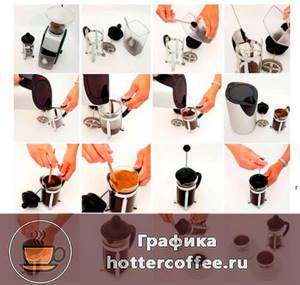
There is no need to lower the layer of coffee deep, or move the plunger back and forth during brewing. Let the coffee interact with the air, so it will better reveal its aroma.
A hot cup helps bring out the best flavor of this drink. Try heating the cup before pouring the finished coffee, and you will immediately understand its benefits.
How to use a French press for coffee: instructions
A French press works by steeping the crushed grains with hot water and then sort of squeezing out the grounds. Once the coffee is brewed, a metal mesh strainer is pressed against the bottom of the flask, separating the coffee grounds from the liquid coffee. The metal mesh filter allows natural oils and fine particles to pass through, creating a dense body of the drink.
We'll tell you how to calculate the amount of ground coffee for your French press.
Let's say you are going to make about 320-350 ml of coffee: for example, for two small cups, or to fill one large one.
| Coffee, tablespoons | Water, ml | |
| Soft, rather weak | 3 | 300 |
| Medium in strength | 4 | 300 |
| Intense, invigorating | 5 | 300 |
One level tablespoon contains 2 heaped teaspoons or 3 level teaspoons. Pour in the coffee and smooth it out so you can guide how much you need next time without using spoons.
It is worth preparing stronger coffee if you are going to dilute it with milk or add spices: this way the coffee taste will not be lost. A weaker one is for those who like to enjoy the notes of taste of a pure black drink or try elite mono-varieties. It’s worth letting all the shades open up, and not overdoing it with bitterness and astringency.
Prepare your coffee
Measure out the beans and grind them, or use ground coffee straight away. For the smell and taste, it is better if you grind the beans right before brewing the drink, so they will not have time to oxidize and the smell will not fade.
It is advisable to choose a medium grind. If you grind grains yourself, after the first time you will understand whether the granule size is chosen correctly:
- If the piston goes down too easily and the drink turns out watery, the grind is most likely too coarse;
- If the piston barely moves and there is too much grounds in the cup, it is better to grind the grains coarser next time.
Prepare the water
Boil the water to about 90 degrees, but if you don't have a thermometer, keep it at a full boil and let it sit for 30-40 seconds to cool slightly. Do not brew coffee in a French press with boiling and gurgling water. It is better if the water is filtered, since excessively hard or soft water can ruin the taste of the drink. 98-99% of the drink is water, and the taste of the entire drink depends on its quality.
Brew
Pour in the coffee and fill it with about half of the water, moving the kettle so as to intensively wet the entire volume of ground beans.
Do not cover or stir for at least a minute. Then stir the coffee and water with a spoon, quite vigorously, to stir the thick top layer of grounds and distribute them throughout the liquid.
Add the remaining water, slowly pouring it in a circle.
Is it worth warming up the French press with hot water before filling, as is done with a teapot? There is no evidence that this somehow improves the taste. Perhaps it can wash off the dust if the press has not been used for a long time.
Close the lid
Cover the French press with a lid, but lift the plunger with the mesh until it barely touches the surface of the drink. Wait about 3 minutes for all the aroma and flavor components to transfer into the hot water. The larger the kettle, the longer it may take to brew. So, in a liter bottle you should keep the drink for about 6 minutes, and in a small bottle, 2-2.5 minutes after the second pouring of water may be enough.
- Some coffees develop better over a longer period of time. It's worth experimenting a couple of times to see what you like.
- As an option, you can brew light roasted varieties for 4.5-5 minutes, dark roasted varieties for about 3.5, since extraction in the second case will occur faster.
Filter
Now gently lower the piston, pressing the grounds to the bottom. He should go with some pressure, but not too fast and not too hard. Press gently, as pressing hard can stir the grounds and make the drink more bitter. If you cannot lower the piston and feel obvious resistance, raise it a couple of centimeters and try again.
You should have about 2 centimeters left to the bottom. Do not push the piston too far. If the press is large and there is a lot of grounds, focus on about 10% of the volume - they should remain inside, they should not be poured into cups.
Pour into cups
Pour coffee into cups, or, if you have prepared a lot, or want to cool it, pour it into another container. You cannot store the finished drink in a French press, as the brewing process will continue, and too many substances will pass into the drink, it will be bitter, sour, and with a lot of caffeine. Brew the amount you intend to drink.
Experts do not recommend drinking the last couple of sips from the bottom of the mug, since some fine grounds invariably end up there, and they are not good for the body and can cause heartburn.
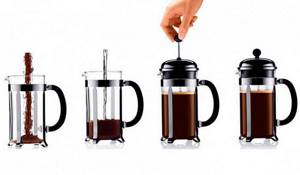
How to choose the right French press
- Flask material. It can be plastic (in cheaper models), metal or glass (in more expensive ones). It is better to opt for glass, as it is a neutral material that does not affect taste and smell. When choosing a coffee pot, you need to make sure that there are no cracks or chips on the flask.
- Filter material. If you brew finely ground coffee, consider a synthetic mesh. If the grind is coarse, then a metal mesh will suit you. Moreover, metal lasts much longer. Also, with coarse grinding, it will be easy for you to compress the grounds, but with fine or medium grinding you will have to apply a little force to lower the piston.
- The tightness of the strainer to the walls. The piston in a French press should fit snugly against the walls; it is better to opt for a simple French press with a stainless steel piston. Because the piston, sealed along the edge with a silicone ring, not only has a short service life, but also produces an odor during brewing.
- The handle of the French press and its body are better than plastic, since they will not heat up. — Everyone chooses the volume and external design depending on their taste preferences and needs. This does not affect the taste in any way.

Advantages and disadvantages
When people talk about what a French press is, they usually explain how to use it, but few people reveal all the benefits of this teapot.
So, here are the reasons to start using a French press.
Advantages
- Delicious and aromatic coffee;
- The grounds are filtered out efficiently, but it is precisely this that often causes irritation of the stomach and intestines. And it’s simply more pleasant to drink coffee when the particles don’t stay on your teeth.
- You can brew your favorite coffee wherever there is boiling water. You don’t need a stove or a Turk (see recipe for oriental coffee). And even the water will not be too hot, the drink will be brewed, but there will be no grain particles in it (and this often happens when you brew coffee in a mug).
- Your coffee is guaranteed not to burn or run away. Very convenient for those who are distracted from the Turk for a second and then have to wash the stove.
- Even a child can handle preparing the drink. It’s difficult for him to keep track of the Turk, and the stove needs to be turned on, but for a French press you just need to press the button on the electric kettle, boil water, pour it into the flask and cover with a lid.
- Unlike coffee machines, due to the long brewing time, the French press allows the maximum amount of oils, flavors and aromatic compounds to pass into the water (see the chemical composition of coffee). You will be surprised how rich and deep the taste of your favorite drink will be.
- You can adjust the strength of the coffee (depending on the infusion time);
- Low price;
- Easy to care for;
- The ability to add spices immediately while preparing the drink;
- Does not consume electricity;
- Compactness;
- Multifunctional (suitable for making tea, tea drinks, etc.).

Flaws
- Manual method of preparing the drink;
- You must additionally have a kettle or other device for heating water;
- You cannot store the drink in it for a long time to avoid oxidation and damage to the parts of the French press.
Caution: If you are used to espresso from a coffee machine (see espresso recipe), the drink from a French press may be too strong for you.
Why is it called French press?
The French press is a coffee brewing device that is perhaps one of the most popular and most used at home.
But do we know who invented it and why it is called French Press?
In different parts of the world it is also called la (a) cafetière, coffee piston or coffee press.
The first documented evidence of this method of preparing coffee dates back to 1852. James Hoffmann wrote about this in his book The World Atlas of Coffee. He called it "the most underrated method."
Two Frenchmen - Mayer and Delforge - announced their innovation.
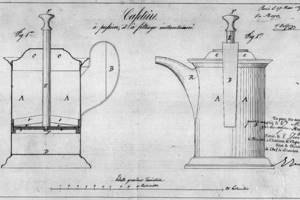
Cafetiere by Mayer and Delforge, 1852
It was not until 1928 that the first patents were registered in Italy by Attilio Calimani and Giulio Moneta.
Their invention, similar to the very first developments of the French, was described as “a vessel adapted to contain a liquid, such as water, into which a substance (coffee in powdered form) is to be poured, is poured by a sliding filter element that fits fairly tightly inside the vessel in such a way that by suitable means the said element will slide to the bottom of the vessel and the infusion will be quickly filtered to prepare it for consumption.”
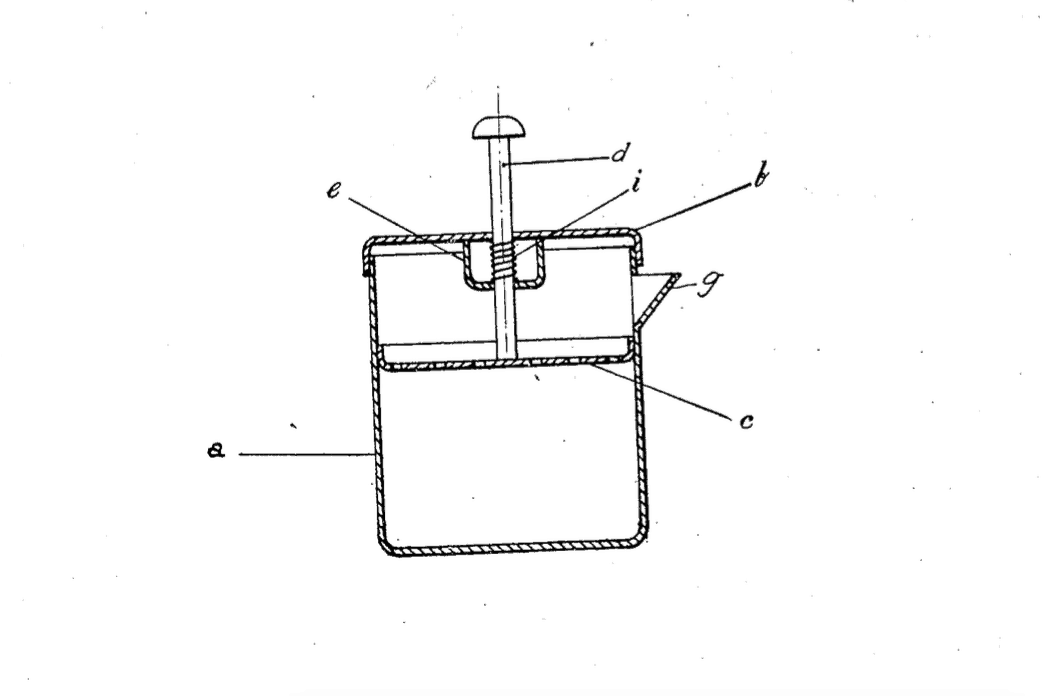
Attilio Calimani and Giulio Moneta's invention design
A review of patents filed in the United States suggests that all subsequent patents worked on a similar principle, making only some additional changes to the basic design of the French Press.
But a significant redesign was achieved by Faliero Bondanini in 1958.
The Italian designer patented his version, classifying it as “an apparatus in which ground coffee or tea leaves are immersed in hot liquid in a beverage container having submersible, for example rotating, filters.”
Important nuances and tips for selection and use
Now you understand what a French press is, and perhaps you want to buy one, or try making coffee in the one you already have.
Here are some tips from the professionals:
- Use coarsely ground coffee. It’s best to either buy grains and ask them to grind them in the store: tell them what you need coarsely, for a French press, or grind them yourself. Pre-ground coffee "espresso blend" or "brew in a cup" will not work as the particles are too fine and will end up in the cup.

- Always brew enough coffee in a French press to pour into cups to drink immediately (see how to properly store coffee). If coffee sits too long in the brewer, it will become bitter and acquire a chalky taste. You can measure the water with a cup so as not to make a mistake with the volume (see the volume of a coffee cup).

- Do not squeeze out the liquid to a drop. This will squeeze out the bitterness from the grounds and the drink will acquire an unpleasant aftertaste. Just carefully lower the plunger to the bottom and pour.
- French presses made of stainless steel are a purchase for at least decades. But they usually do not show how the brewing process is going. In this regard, glass ones are more convenient, but they are less durable.
- Many manufacturers have replaceable glass bulbs and pistons, but this needs to be clarified when purchasing. Some even include an extra flask in the kit. You can also often find 7 gram measuring spoons - that’s how much coffee you need for one serving.
In most cases, you can wash your French press in the dishwasher. This is a device where nothing gets damaged by hot water or detergent.
As a last resort, remove the flask from the plastic case and wash only it. There is no need to use abrasive products, and in principle, everything is easy to clean even with a regular sponge and dishwashing detergent.
To brew tea and coffee, it is better to use different French presses. Otherwise, an unpleasant aftertaste from another drink may appear.
A Guide to Making French Press Coffee
Before using the French press for tea and coffee, you need to rinse it with boiling water - this will allow the glass of the flask to heat up. The water should be soft, and in no case just tap water. A good option is from a spring, a well (if it is not hard in your area) or bottled (from a quality manufacturer). It is better to filter the water before use.
Interesting! How to brew coffee at home without a Turk
The piston should be lowered slowly, with force. If it moves heavily, the grains are ground too finely; if it moves lightly, it is coarse.
The strength of the drink depends on the time during which it will remain in the flask. It’s better to pour it right away, otherwise it will be too concentrated and bitter. It will not be possible to prepare espresso coffee in such a device, since this device does not provide a quick rush of water under high pressure, as the authentic recipe for the drink suggests.
In a French press you can not only brew coffee, but also prepare milk foam. To do this, milk (fat content from 2.5%) needs to be heated and poured into a flask (no more than 1/3 of the volume). Foaming is done with short, vigorous movements of the strainer up and down.
Grinding degree and dosage
The coffee grind should be coarse: finer than buckwheat, but more sea salt. If the coffee base is thin, the drink will turn out cloudy with floating sediment.
It is recommended to take freshly ground coffee, since after grinding for a few minutes most of the essential oils evaporate from the beans, they “exhale.” If you buy a pack of ground coffee, it no longer has that aroma and rich taste.
The most delicious coffee comes from beans that were roasted about a month ago and ground immediately before preparation.
Water temperature
Expert opinion
Vadim Kudryavtsev
Coffee expert, professional barista and simply in love with this aromatic drink.
Ask the barista a question
Boiling water kills the aroma of coffee, so you need to fill the beans with water at a temperature of about +95...+98°C.
To do this, you need to first heat the kettle and then let it sit for a while.
conclusions
- A French press is a brewer for coffee or tea in which the grounds fall to the bottom and are retained with a filter (see which has more caffeine - tea or coffee?).
- Most often, French presses are made of glass and stainless steel, but various options are possible.
- Among the main advantages of a French press is ease and safety of use; only boiling water is required to prepare the drink.
- Choose a coarse grind of beans, and always brew as much as you will drink at once, do not keep the coffee in a French press.
- The same French press is suitable for tea and coffee, but it is better to have different ones.
Do you use a French press? Do you have a favorite brand or manufacturer? Share your opinion in the comments!
Step-by-step recipe for brewing coffee
In order for the dosage to be correct and the result to be stable, the coffee must be weighed before preparation. If this is not possible, the base is poured into the French press flask up to the beginning of the handle or to the level of the filter when lowered. And you need to understand that there is no such thing as the “right drink” - the ideal one is born as a result of experiments.
Interesting! How to brew coffee in a coffee maker
Let's look at how to prepare coffee step by step (since a French press is often used as a tea infuser, the recipe for making it will be similar):
- Heat the water to the desired temperature.
- Pour the crushed grains into a heated device (you can immediately add spices to taste, but just a little - literally at the tip of a knife).
- Fill the base with a small amount of water, but so that the coffee is completely covered.
- We wait half a minute - this is necessary for the taste of the grains to develop. Visually, the coffee mass will swell and its volume will increase.
- Pour in the remaining water, close the device and leave it for about 5 minutes.
- Use a spoon to skim off the foam that has formed on top.
- After this, press the piston. If its movement is too tight, you need to repeat the pressure several times.
- Press the grounds to the bottom, filtering the drink.
Coffee (or tea) is ready.
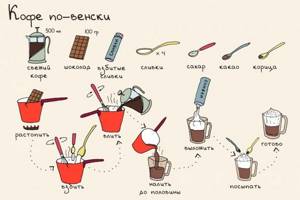
How to brew a cold brew
In this way, you can not only brew hot coffee, but also make cold coffee, which even has its own name - Cold Brew. Its preparation differs in that instead of boiling water, cold water is poured into the French press flask. After this, the drink is left at room temperature or put in the cold for 9-12 hours. In this case, the vessel does not need to be closed. During this time, the drink will reach the desired aroma and consistency, and will be saturated with oils and beneficial substances. The required time must be maintained; if you take it out earlier, you will get “coffee water” and not Cold Brew.
After the specified time has passed, the piston must be lowered a few centimeters (this is not required until the end, since bitterness may appear). To pour into a mug or glass, use a filter, which can be replaced by gauze folded several times or a fine sieve. If the drink is not filtered, it will turn out to be too tart and concentrated. Before using it, you need to add a couple of ice cubes.
What kind of coffee do you like best?
ColdHot
Properly brewed Cold Brew has a full-bodied flavor with a natural coffee aroma and moderate sweetness.
Interesting! How many cups of coffee will be produced from 1 kg of beans?
